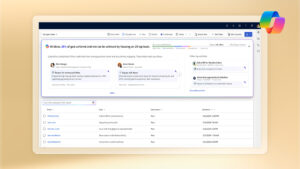
How a leading logistics company navigated the shift to relationship selling
A recent survey of over 200 B2B sales leaders conducted by Heinz Marketing and Microsoft, sheds light on the accelerating shift to relationship selling models across a wide variety of organizations. The results are clear: the highest-performing teams are abandoning boilerplate sales funnels to nurture genuine relationships at scale, enabled by technology that provides sales teams with data-based insights that drive pipeline.
The statistics tell a compelling story (read the blog recap and full report to learn more), but the impact doesn’t fully come to life until you can hear stories from sales teams using modern, intelligent sales tools to drive more meaningful, personalized engagement with prospects and convert opportunities faster. 
In a new customer story, Crane Worldwide Logistics shared how the fast-growing global transport and logistics company is overcoming the challenges many sales leaders voiced in the survey, with help from the Microsoft Relationship Sales solution, which brings together LinkedIn Sales Navigator and Microsoft Dynamics 365 for Sales. Their experience closely mirrors trends from the report—including these top insights:
1. Comprehensive intelligence is paramount to relationship selling
The survey found that in high-performing sales departments, there’s no room for siloed sales data. When asked which capabilities were most crucial in building account relationships, the top answer was the ability to manage and synchronize lead, account, and opportunity data.
John Jergens, Vice President of Global Sales at Crane Worldwide Logistics, shared the pain many sales leaders in the survey voiced. “We weren’t all working on a common platform, so we were lacking in visibility,” he said. “We knew we had a vast sales pipeline out there, but there wasn’t much data available on it, so we couldn’t see how robust it was.”
With Microsoft Relationship Sales, the team has one place to synchronize customer engagement, sales, and productivity data across LinkedIn Sales Navigator, Dynamics 365 for Sales, and Office 365. “We created a very simple weekly routine where our sellers spend about 30 minutes adding new data into Dynamics 365 for Sales. That’s just six minutes a day to keep everything up to date.”
2. Sellers need real-time insights into the sales pipeline
In the report, the surveyed sales leaders pinpointed the need for up-to-the-minute insights into the sales pipeline, and ways to use that data to help determine the next best steps to take in the sales process.
“With Microsoft Relationship Sales, we can generate KPIs that tell us what a healthy pipeline should look like. We look at the number of prospects and targets, how long the sales cycle takes, and the time from when we close an account to the time it generates revenue,” explained Jergens. “And if the pipeline isn’t where it should be, we can support the sellers with the resources that they need—it’s more productive all around.”
3. The right tools unlock engagement at scale
Nothing is more effective for engaging prospects at scale than providing access to the right tools, such as CRM software, according to more than a third of the survey respondents. Teams also rely on a defined sales process or playbook to advance leads through the funnel.
When Crane Worldwide Logistics made the move to Microsoft Relationship Sales, engagement quickly increased. “Once the salesperson finds a prospect using LinkedIn Sales Navigator, they use Dynamics 365 for Sales to easily track those conversations,” said Jergens. “It’s had a direct impact on the time it takes to develop customer relationships, because we have true visibility into those opportunities now.”
4. Sales and marketing need to be aligned
Three-quarters of surveyed sales leaders in the report said that having sales and marketing teams in synch was critical to achieving revenue goals, and they needed seamless tools to share feedback, reports, and insights in a coordinated way.
Crane Worldwide Logistics is adopting Microsoft Relationship Sales solution’s capabilities to help sales and marketing stay on the same path. “The marketing teams are able to work in tandem with the sales team to help them understand how marketing activities can help nurture their prospects,” says Jergens. “They’re really starting to get up and running, using Microsoft Relationship Sales to communicate with the customer base and help convert contacts into leads and then into opportunities.”
The takeaway
Crane Worldwide Logistics is proving that combining insights and account intelligence correlates to increased sales productivity and the likelihood of achieving predictable results. The team is just getting started in its new sales journey, but the 300 Microsoft Relationship Sales users (including 150 direct sellers and marketing and account management teams) are making big strides. “Just by getting the team using the platform, we’ve seen an uplift in activity in all areas,” said Jergens. “We’ve had record growth since implementing Microsoft Relationship Sales—the last quarter was excellent for us.”
Read the relationship selling report for the full picture
Find more details about what’s driving success for today’s B2B sales organizations inside the report, including strategic recommendations and insights based on the findings.
[msce_cta layout=”image_left” align=”left” linktype=”blue” linkurl=”https://info.microsoft.com/ww-landing-ThePowerofRelationshipSelling-eBook.html” linktext=”Read the Power of Relationship Selling report” ][/msce_cta]




